The new Flight Attendant suspension adjustment system from RockShox is designed to control the compression damping in your suspension fork and shock, automatically tuning it to create the most efficient ride possible.
RockShox claims its new system to be ‘predictive’ rather than ‘reactive’, thanks to the way in which the sensors talk to one another. And, just like SRAM’s AXS drivetrains, Flight Attendant is completely wireless.
This isn’t the first system of its kind, though. If you cast your mind back, you’ll remember that RockShox worked alongside Lapierre (as well as Ghost and Haibike) to produce the EI system, which the brand featured on a number of models, including its enduro race machine, the Spicy.
While this system showed enormous potential, it needed refining because it only controlled damping at the shock.
The next big jump (and it really was a significant leap) in performance came courtesy of Fox Suspension, who brought us Live Valve. Using a number of strategically placed sensors, Live Valve enables both the fork and shock to react rapidly to the terrain and allows you to tune sensitivity. It works impressively, too, but many will argue it isn’t perfect.
So how does the RockShox Flight Attendant system work, how is it different to what’s already out there, and what’s it like to ride? Carry on reading to find out.
Five things you need to know about the new RockShox Flight Attendant automatic suspension system
- Flight Attendant uses sensors on your fork, shock and in your crankset to automatically adjust your suspension damping
- The system is completely wireless
- It’s only available on complete bikes from Trek, Specialized, Canyon and YT at present
- The system offers plenty of tuning potential to suit the rider’s needs
- It cannot make setup recommendations for you
How does the RockShox Flight Attendant system work?
Flight Attendant is designed to make your suspension work as efficiently as possible. This means firming up the bike when the trail flattens or smooths out, but ensuring the suspension can still work enough when your tyres need to find traction.
Then, of course, the suspension needs to be working at its best when the trail begins to point downwards, to ensure the rider can eke out every millimetre of travel for maximum grip and comfort.
Sensors galore

How is this achieved? The new RockShox Flight Attendant system took a full seven years to create and consists of a fork control module (which is where the setup and customisation happens), a motor module on the rear shock and a pedalling sensor inside the bottom bracket spindle.
At its heart is a complex algorithm that does all the decision-making, ensures you’re in the right setting at the right time and, according to RockShox, was the toughest nut to crack when it came to getting things feeling just right. The entire system is wireless, just like SRAM’s AXS gearing.
Along with the pedalling sensor, there are accelerometers housed within the RockShox suspension fork and shock module.
While these go about their business picking up on every bump or change in gradient, the sensor located within the crankset is there to detect any pedal inputs. While some have speculated as to whether the pedal sensor is measuring more than just rider inputs (SRAM does offer Quarq power meters, after all), RockShox assures us that it isn’t. It quite simply detects whether you are pedalling. That said, it's sensitive enough to respond to smaller crank movement and not just complete revolutions.

A new left-hand AXS controller, which features the latest Rocker Paddle design (as used on the shifter), allows you to control Flight Attendant as well as a Reverb AXS dropper post.
Thanks to the same proprietary encryption wireless network we’re already familiar with, as used on SRAM’s Eagle AXS drivetrains, information from the sensors (both from the terrain and rider input) is collected and analysed using the Flight Attendant algorithm before adjusting the suspension between one of the three settings (namely – Open, Pedal and Lock).

While that might sound like a lengthy process, RockShox claims that the system is making these “suspension-position” decisions every five milliseconds, which is seriously quick but totally necessary if Flight Attendant is to feel as fluid and as natural as promised.
Proactive rather than predictive
Although RockShox says that the Flight Attendant system is predictive rather than reactive and uses rider and terrain inputs (pedalling and bumps hitting the front wheel so the shock mode can be altered appropriately, a little like EI) to help ascertain which setting you should be in, we feel that ‘predictive’ is probably the wrong word to use.
While there’s no denying the algorithm is certainly very clever and the system can operate very, very quickly, we think describing it as proactive is possibly more accurate. There is, after all, an element of reactivity.
When it comes to toggling through the settings as and when the complex algorithm wants to implement change, you’ll hear a short sharp “buzzzzzz”, much like you would from a SRAM AXS rear derailleur as it shifts gears.
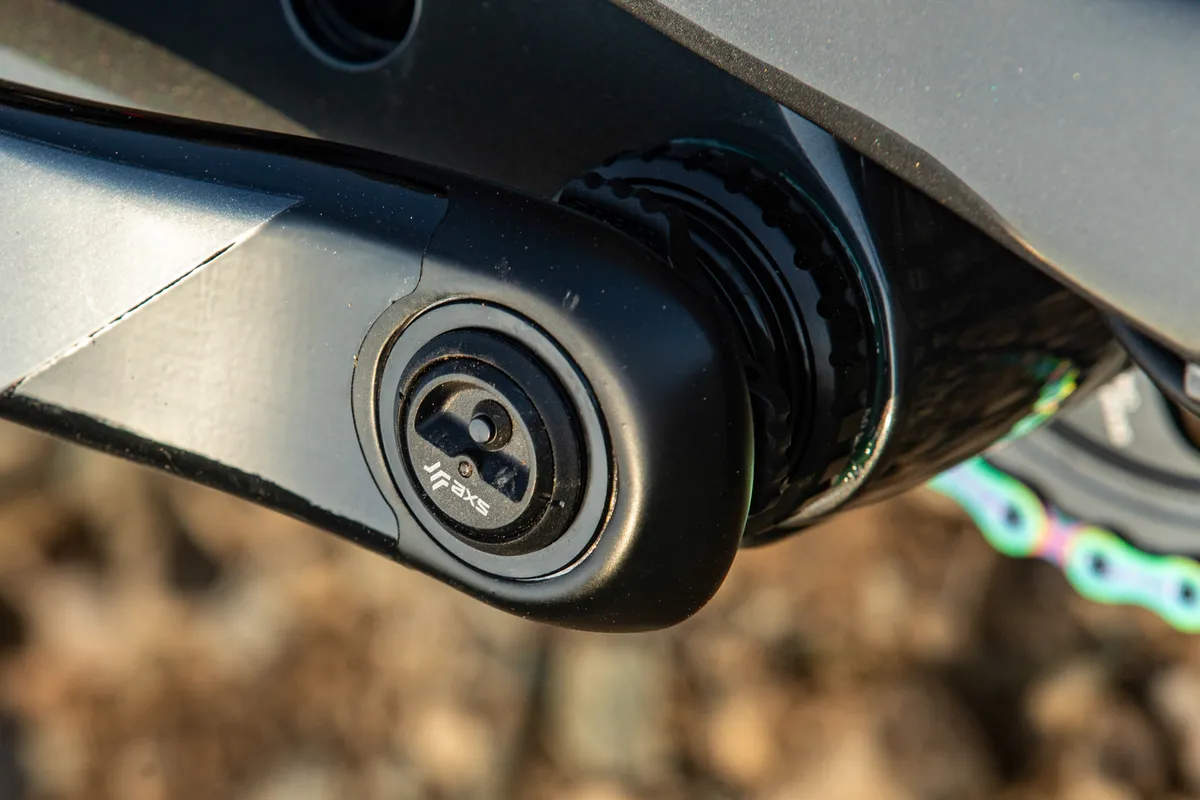
RockShox says that the adjustments being made to the compression damping come courtesy of a compression needle that’s being driven in and out of a valve. But in this instance, the needle is moved via a geared motor, similar to that found on its AXS rear derailleur.
Depending on the setting/needle position, ports within the compression assembly can be closed off, altering the amount of damping on offer. In the Lock setting, oil flow is redirected, and a plate is pushed down to create the lock force required.
RockShox Flight Attendant settings and modes
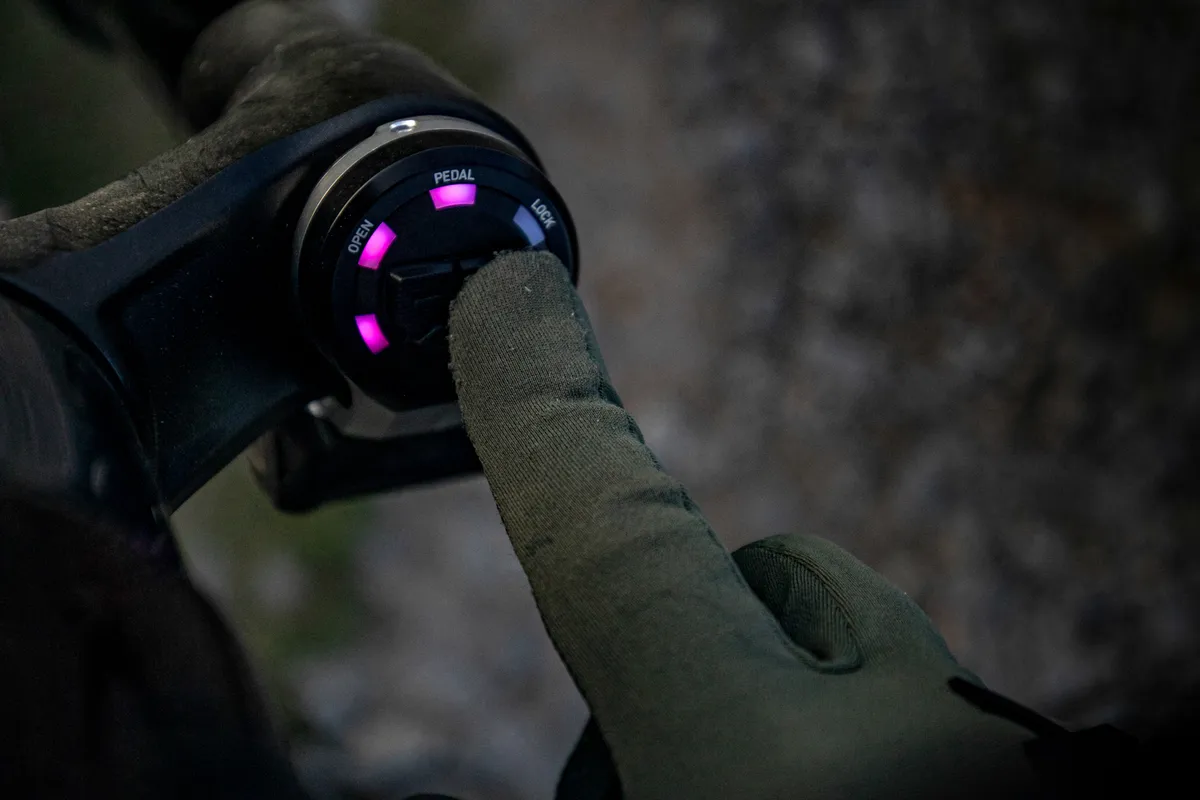
Flight Attendant started life with just two settings (Open and Lock) until the team saw the potential to add a third setting, somewhere in the middle.
This is how the Pedal setting emerged, following on from the team adding a rudimentary pedal sensor. This was added not so much for the long, smooth climbs up to the top of the mountain, but to create a more efficient platform when tackling undulating singletrack where you might not have the opportunity to reach down for the shock lever to firm things up, yet still experience energy loss due to your suspension bobbing around as you pedal.
Adding the third setting is designed to improve this and offer the best of both worlds, firming up the suspension enough to let you really get the power down, but also still allowing your wheels to suck up the worst of the bumps.
So, while the settings (Open, Pedal and Lock) are self-explanatory, the three governing modes need some explaining.
Auto mode, Manual mode and Override mode
In Auto mode, as you can probably guess, Flight Attendant switches automatically between its three settings. This means the rider can leave the controls well alone and let the system do the thinking.
If you’re worried that the robots are indeed beginning to take over, worry not, as Manual mode allows you to toggle between the settings using the designated button on your left-hand AXS controller.
Finally, there’s the Override mode. This enables you to shortcut from Auto mode to your designated setting by pushing and holding the designated button on your AXS controller. When you want to revert to Auto mode, tap the same button again and it’ll switch back.
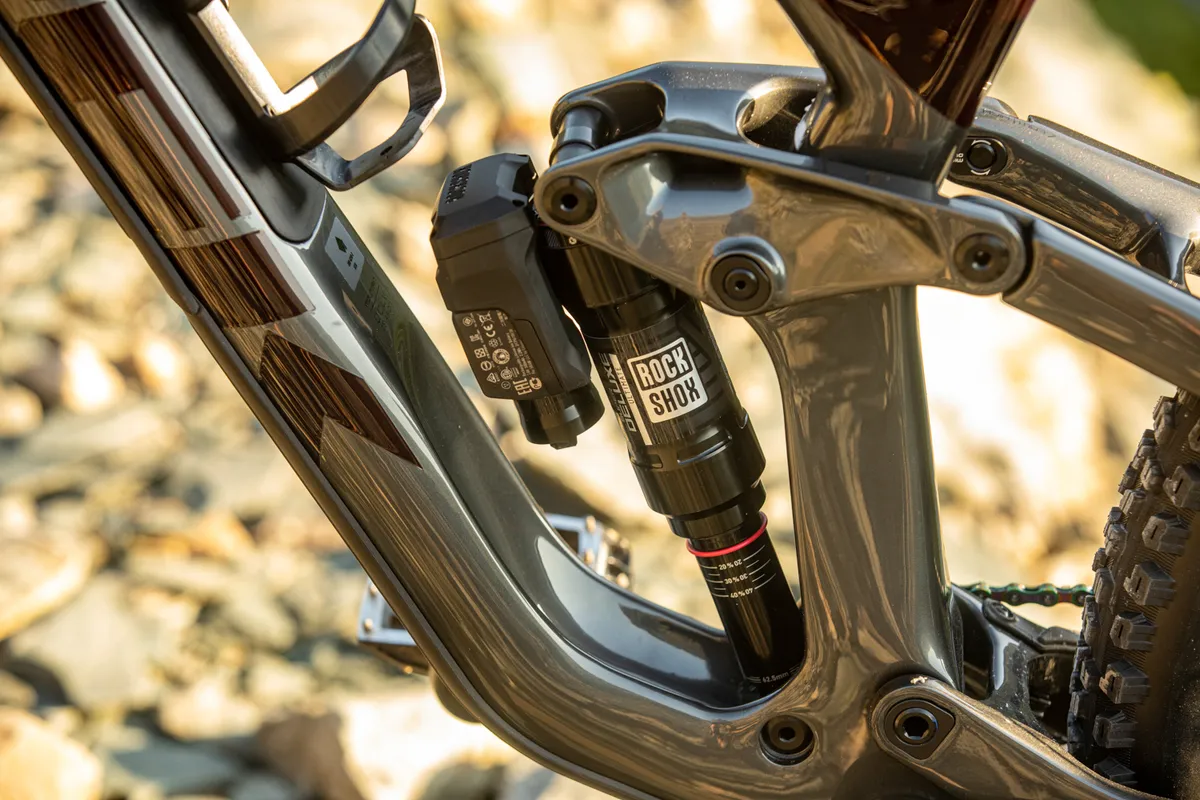
However, shouldn’t the system be quick enough to do the adjusting for you? Well yes, in theory that's correct, but it’s an additional mode that RockShox wanted to add in, just in case.
Still confused? Yes, we were too, which is why we asked Jon Cancellier, the man in charge of the Flight Attendant project.
“You can see the trail ahead, and it’s going to be rough or there might be something else, some kind of trail feature, but you don’t care. I’m going to put the thing (Flight Attendant) into Override and pedal as hard as I can through whatever that is, then I’m going to turn the system back on. The idea was really just to sprint,” said Cancellier. It certainly feels like this mode is suited well to racers.
That’s assuming your designated setting for Override mode is the Pedal or Lock setting. You could have it set to Open. In this instance, even when the climb ahead of you appears smooth and Flight Attendant will toggle the fork and shock into Pedal or Lock, you’ve decided you want the system to stay fully open, so use Override mode to make it so.
How different is Flight Attendant to Fox Live Valve?
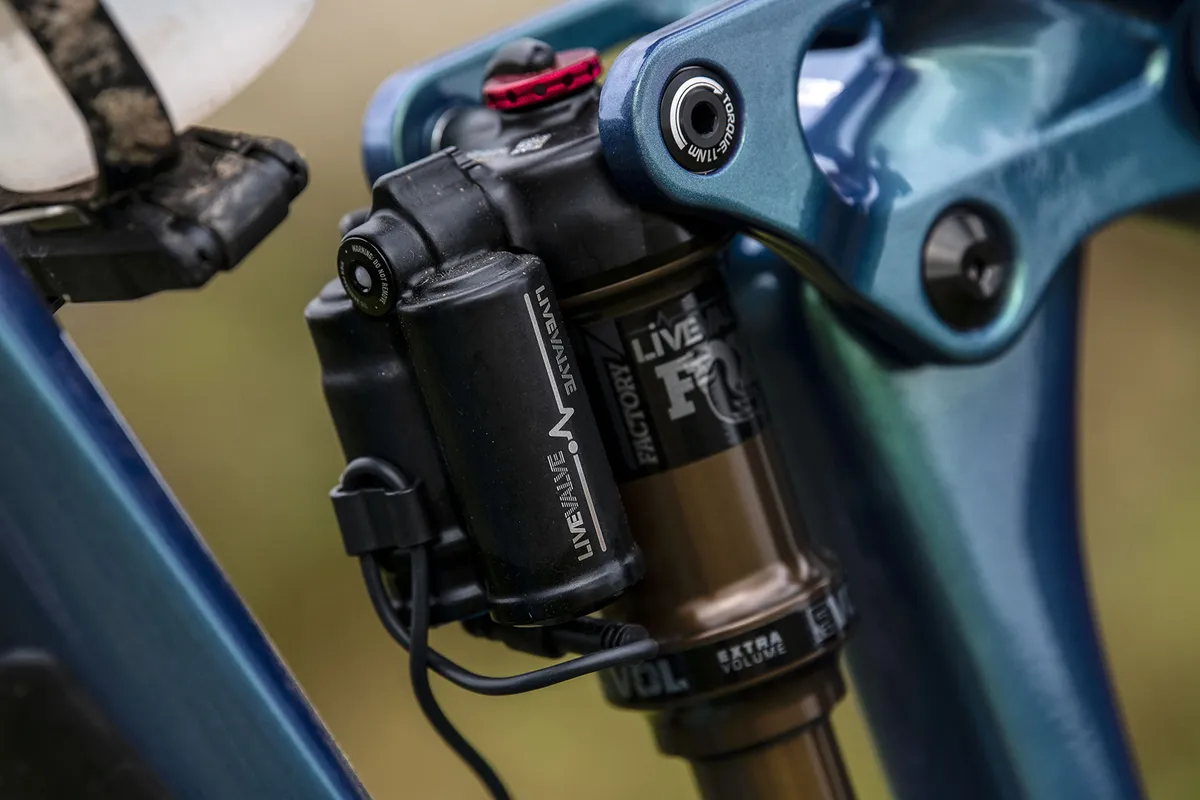
What’s the difference between this and Fox’s Live Valve, though? Well, aside from Flight Attendant having an additional input from the rider to help make its setting decisions, it also defaults to its Open setting, rather than Lock.
While Live Valve remains in its Lock setting, opening up as soon as a bump, change of gradient or jump is encountered, Flight Attendant works the other way around. The idea here is that the system stays open as much as it can, only changing into a firmer setting as and when the algorithm deems it necessary.
RockShox Flight Attendant tuning potential
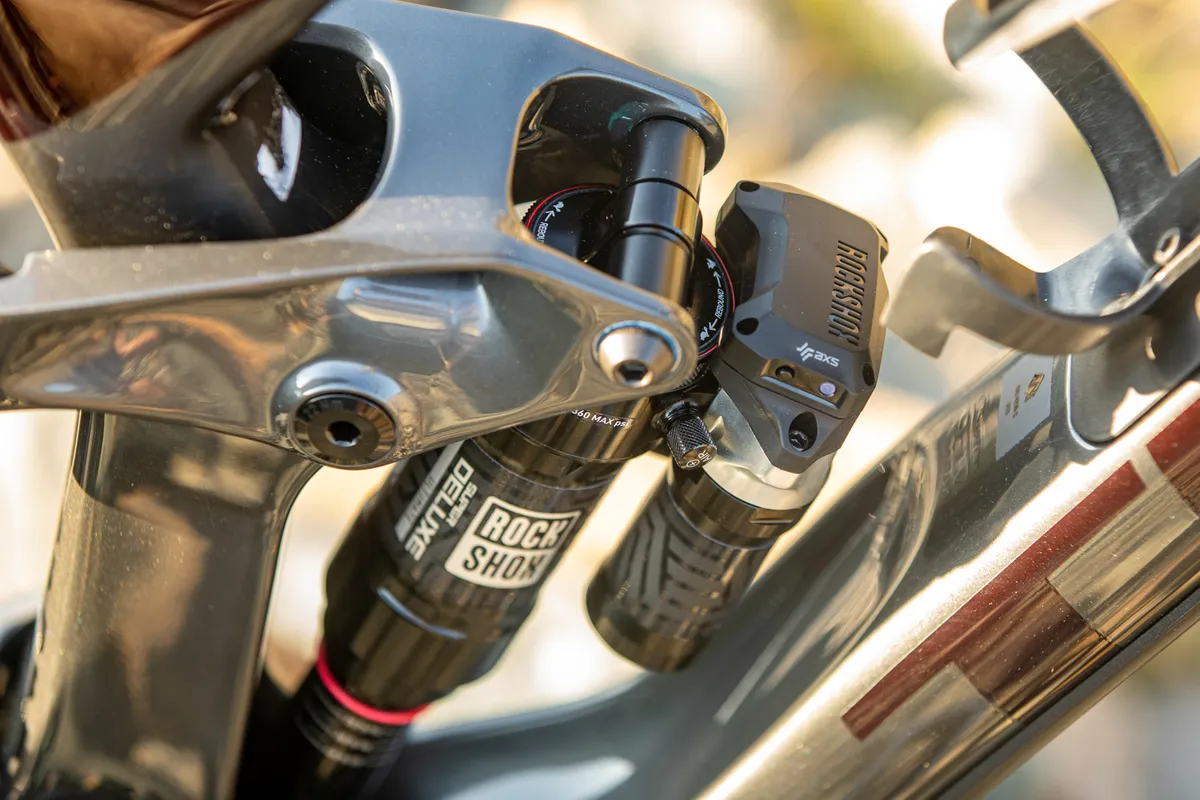
The key to how Flight Attendant works is how the rider sets the bias.
The bias can give the system preference to either the Open or Lock setting (there is a central, neutral position, too) depending on your riding style or the type of terrain you’re tackling.
That means, in theory, if you’re keen to eke out every watt on every ride, setting the bias to +1 or +2 (more locked out), Flight Attendant will, at every opportunity when deemed possible, firm up your bike as much as possible, leading to a firmer ride.
Equally, if you’d rather the suspension feels more active, even when inching your way up the climbs, setting the bias to -1 or -2 (more open) will make the fork and shock feel more open, only reverting to the Pedal or Lock settings when necessary and offering a plusher overall ride feel.
The neutral, central bias setting is designed to give you the best balance of all three settings.
Different settings for fork and shock
There’s more, though, as Flight Attendant will allow your fork and shock to be in two different settings simultaneously. RockShox refers to this as a “split state”.
For example, if you were in the -1 (bias) setting, your fork may remain in the Open setting while your shock would be in Pedal (great for undulating terrain or technical climbs).
On the other hand, in +1 on the bias setting, your fork could be in the Pedal setting with your shock locked out for a more pedal-friendly feel, though arguably less comfortable.
Both the fork and shock can be tuned further, though. Just like any other RockShox product that uses an air spring, there’s scope to alter the air volume and therefore adjust the spring curve, potentially altering how the fork/shock ramps up through the final third of the travel.
Rebound is adjusted on both the fork and shock in exactly the same way as on non-Flight Attendant units, too (the fork features a dial at the base of the right leg, while the shock features a rotating bezel).

Low-speed compression can be adjusted on both dampers, too. Just like the bias adjustment, low-speed compression needs to be altered via the fork-top control module or via the smartphone SRAM AXS app. There are 10 clicks of adjustment on offer for both the fork and shock.
But what about the high-speed compression damping adjustment? In this case, high-speed compression is pre-set, similar to that of the Charger 2/RCT3 dampers.
While this might limit fine-tuning, RockShox claims damper performance is still pretty similar to the highly successful Charger 2.1 and shouldn’t impact downhill performance.
Inevitably, there’s an element of trade-off – while you might not get to tweak your high-speed compression damping, Flight Attendant is constantly trying to optimise damper settings to make your ride as efficient as possible – but it’s one that RockShox believes is worth making.
Who is RockShox Flight Attendant aimed at?
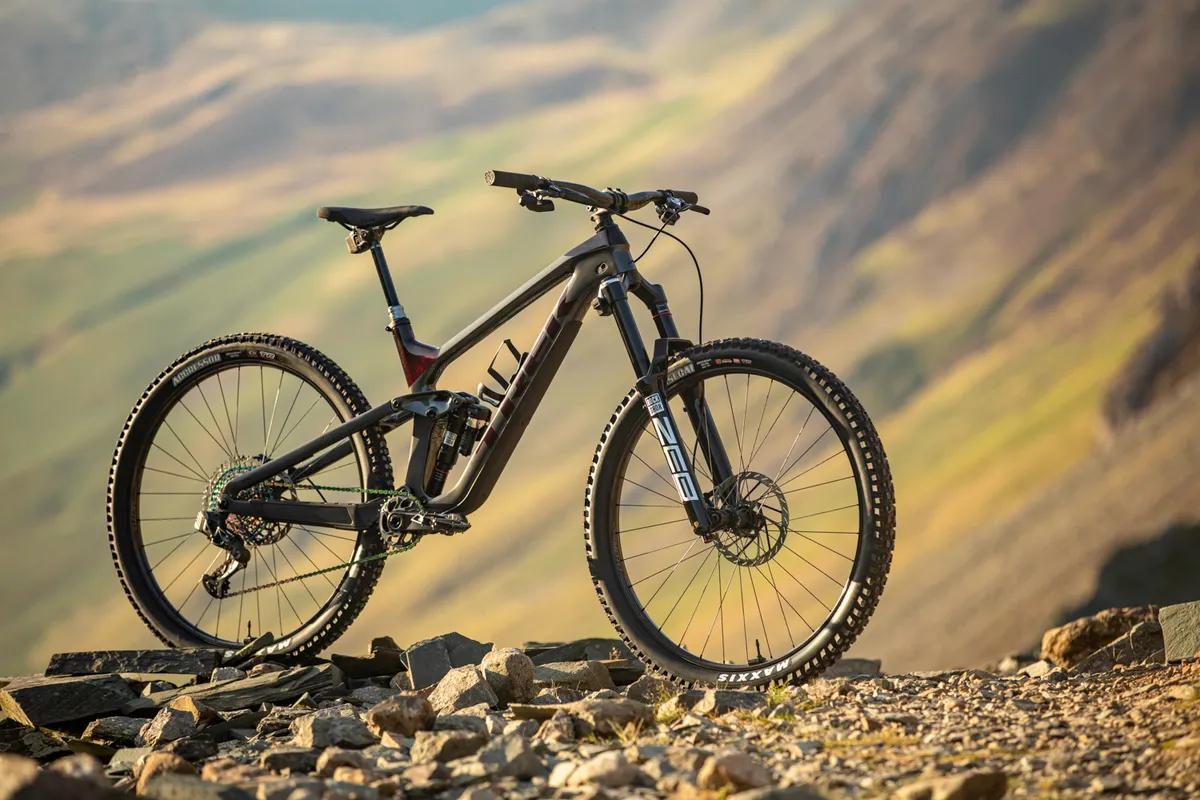
According to RockShox, Flight Attendant is “for mountain bikers. If you really enjoy riding your bike, getting the most out of every bike ride you go on, then Flight Attendant is for you”.
That may well be true, but we can certainly see how it would benefit racers.
According to the brand, there hasn’t been an emphasis on doing timed runs or pushing the technology onto its Enduro World Series riders (though some have used it), but RockShox thinks that the system should help make riders more efficient and, in all likelihood, faster.
Will we see the technology moving onto cross-country or downhill bikes? RockShox was explicit in saying that it wants to start with trail and enduro bikes, as it believes those bikes will see the biggest benefits.
With so many demands on these bikes (they need to climb well but descend even better) and the amount of travel on tap slowly creeping up, making them as efficient as possible without the rider having to really do anything seems like it makes sense. But what of XC and DH?
When we asked Jon Cancellier, he rolled out the usual, “we’re always working on new things” line, but said that the XC racers are keen on the idea of it. Equally, we’ve seen the use of remote shock lockouts in downhill, so it seems that it could all be to play for as time progresses.
RockShox Flight Attendant fixtures and fittings
RockShox says that creating the hardware for Flight Attendant was the easy bit, compared to figuring out the software (which it claims took three years to get dialled in).
Still, it seems to have done a very neat job when it comes to the “easy bit” and how the overall system is packaged.
As we’ve already mentioned, Flight Attendant is wireless. That means, unlike Fox’s Live Valve (and the RockShox EI system that came before that), which is connected via a series of cables and requires a frame to offer cable porting and somewhere on the frame to house the control unit/battery to use the system, Flight Attendant does not.
There are also separate AXS batteries housed on the fork and shock modules, so frame manufacturers won’t have the worry of creating a dedicated space for a central battery/control unit, as on Live Valve. This means we should see Flight Attendant on more bikes than we currently see Live Valve.

That being said, the shock module does add some extra bulk to the shock size, which means not all frames will have clearance for a Flight Attendant-equipped shock. If the shock fits, though, the bike is, in theory, compatible.
Arguably the most visible component of the system is the control module that sits on top of the fork, with the battery piggybacking off the back of it. While this looks highly susceptible to damage, Cancellier assures us that after years of testing with the module in that location on a variety of testers' bikes, they’ve had no crash damage or issues.
Speaking of batteries, it’s worth noting that these are the same SRAM AXS units found on their drivetrains and all cross-compatible. Battery life is a claimed 20-30 hours on the fork and 30-40 hours for the rear shock, while the AAA battery used in the pedal sensor should last 200 hours. Just like SRAM’s other AXS controller, the new left-hand unit uses a CR2032 battery, which should last 200 hours.
RockShox Flight Attendant forks and shocks
It isn’t all about the wireless wizardry when it comes to Flight Attendant, as RockShox is also unveiling updates on the Pike, Lyrik and ZEB Ultimate forks.
Updated RockShox Lyrik and Pike

Both the new Pike and Lyrik sport a whole new look, and now feature a machined crown and more angular fork arch, much like that of the latest SID and ZEB forks. RockShox claims the ZEB chassis has undergone some refinements rather than a complete overhaul.
All three Ultimate models share some features, though. That includes the use of the new Charger Flight Attendant damper which, as you’ll know by now, offers automatic adjustment between its three settings, as well as 10 clicks of low-speed compression damping adjustment and 20 clicks of rebound adjustment.
Debonair spring gets an update, too
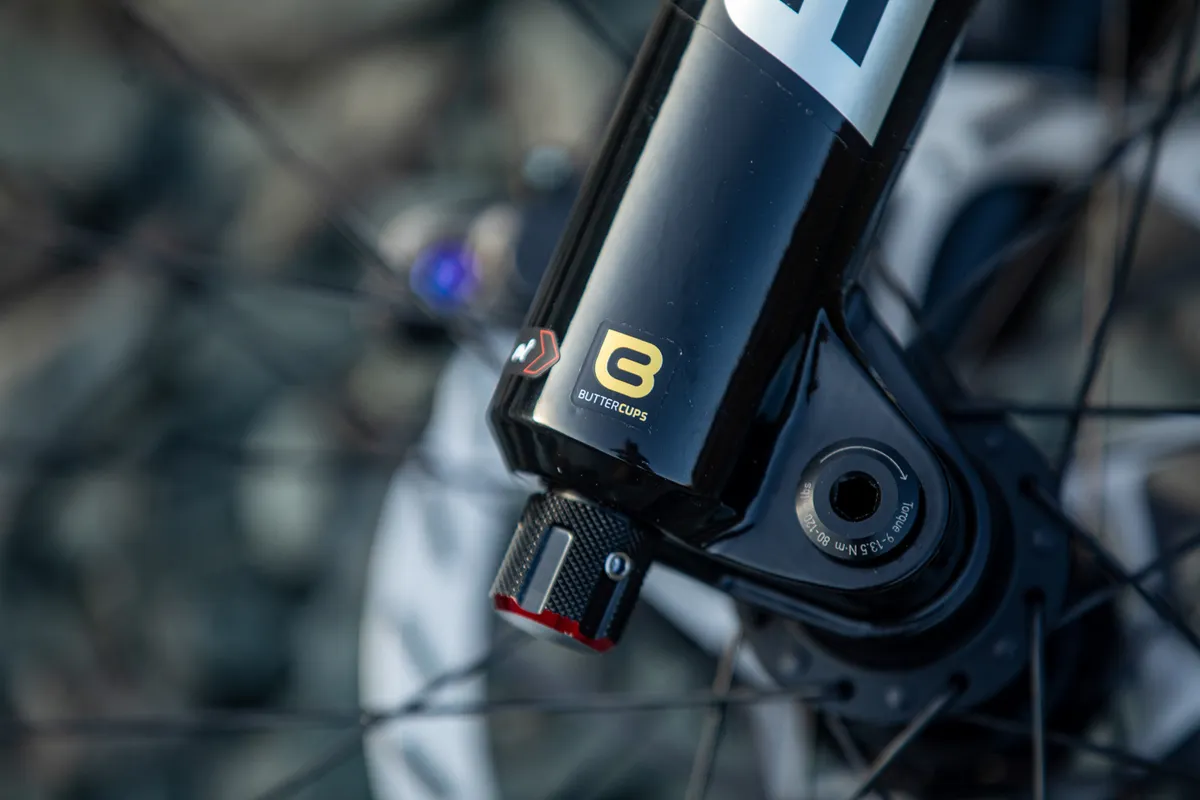
There’s a new DebonAir+ air spring, too. RockShox says that the new spring is initially more sensitive than the current version but still offers plenty of support and rides high in its travel.
When RockShox updated the Pike and Lyrik air springs last year, despite the improvements and the fact that it managed to ride higher in its travel, some riders did note a loss in the initial suppleness.
Another small but apparently quite significant feature to now be included is something called ButterCups. These small rubber pucks are seated inside a gold housing at the end of both the damper and end spring (where they connect to the fork lowers). The idea here is that these small rubber bumpers can absorb high-frequency trail chatter before it travels through the fork.
At the rear of the fork lowers, you’ll now spot pressure relief valves. We’ve seen these used across a number of forks in the Fox line-up already, but it’s a first for RockShox. The idea here is to offer riders a quick and easy way to disperse unwanted air pressure that’s built up in the lower leg due to a change in temperature or variations in altitude.
And for those who don’t use RockShox Torque Caps – the wider diameter hub end caps that slot into larger cut-outs in the fork lower legs – RockShox has created blanking plates that can be screwed into place to take up the excess space. These items are dubbed ‘Stiffness Reducers’ as it’s claimed you’ll not be gaining the additional five per cent that Torque Caps offer.
Finally, the new Super Deluxe Ultimate Flight Attendant shock. This features an electronic three-position RCT3 Flight Attendant damper.
RockShox Flight Attendant pricing
As it stands, Flight Attendant can’t be bought as an aftermarket product, and is only available on full bike builds.
It will likely feature on the higher-end, SRAM Eagle AXS-equipped bikes, or at least those that use a RockShox Reverb AXS post for easy integration with the left-hand AXS controller that’s tasked with being able to operate the post itself and Flight Attendant.
Which bikes is RockShox's Flight Attendant fitted to?
At the time of the new system's launch, Flight Attendant is fitted to full builds from Trek, Canyon, YT and Specialized.
YT Jeffsy Uncaged 6

- Frame: Ultra Modulus carbon, 150mm travel
- Shock: RockShox Super Deluxe Ultimate Flight Attendant, RCT3
- Fork: RockShox Lyrik Ultimate Flight Attendant, 150mm travel
- Crankset: SRAM XX1 Eagle Flight Attendant
- Drivetrain: SRAM XX1 Eagle AXS
- Price: £7,799 / $9,499 / €8,999 / AU$13,299
YT Capra Uncaged 6
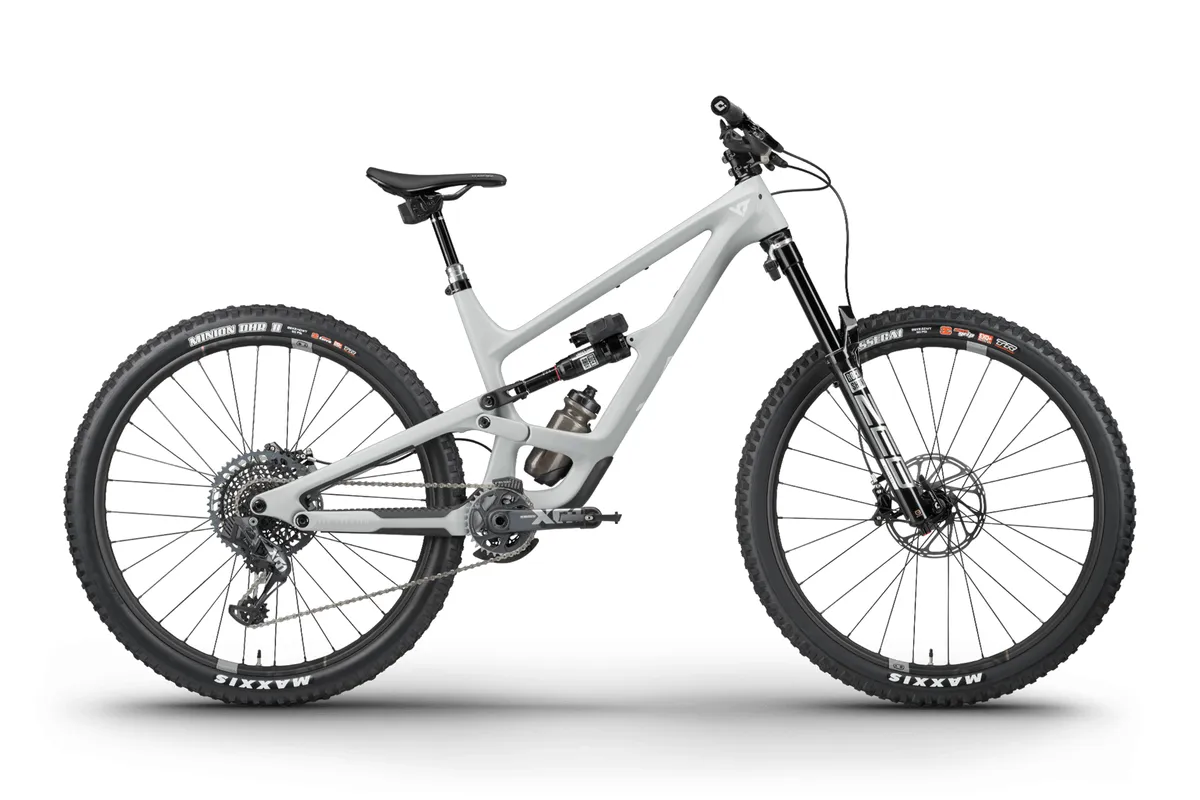
- Frame: Ultra Modulus carbon, 165mm travel
- Shock: RockShox Super Deluxe Ultimate Flight Attendant, RCT3
- Fork: RockShox ZEB Ultimate Flight Attendant, 170mm travel
- Crankset: SRAM X01 Eagle Flight Attendant
- Drivetrain: SRAM X01 Eagle AXS
- Price: £7,799 / $9,499 / €8,999 / AU$13,299
Canyon Neuron CF SLX LTD

- Frame: CF M089
- Shock: RockShox Super Deluxe Ultimate Flight Attendant
- Fork: RockShox Pike Ultimate Flight Attendant, 140mm travel
- Crankset: SRAM X01 Eagle Flight Attendant
- Drivetrain: SRAM X01 Eagle AXS
- Price: £8,099
Canyon Spectral 29 CF LTD AXS
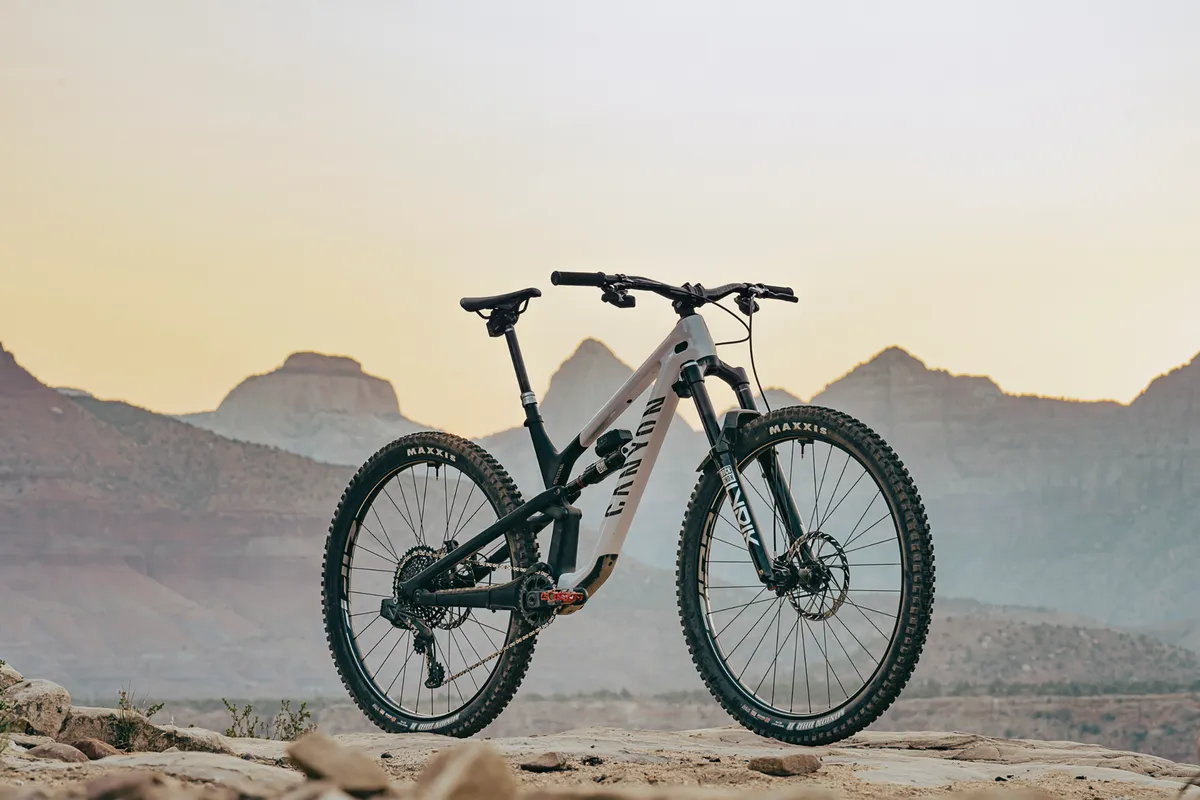
- Frame: CF M121
- Shock: RockShox Super Deluxe Ultimate Flight Attendant
- Fork: RockShox Lyrik Ultimate Flight Attendant, 160mm travel
- Crankset: SRAM X01 Eagle Flight Attendant
- Drivetrain: SRAM X01 Eagle AXS
- Price: £8,099
Trek Slash 9.9 XX1 AXS Flight Attendant
- Frame: OCLV Mountain Carbon, 160mm travel
- Shock: RockShox Super Deluxe Ultimate Flight Attendant
- Fork: RockShox Zeb Ultimate Flight Attendant, 170mm travel
- Crankset: SRAM XX1 Eagle Flight Attendant
- Drivetrain: TBC
- Price: £TBC
Specialized S-Works Enduro
Specialized is launching a Flight Attendant equipped S-Works Enduro soon. You can expect to see it equipped with a RockShox ZEB Ultimate Flight Attendant fork and RockShox Super Deluxe Ultimate Flight Attendant shock, along with a SRAM AXS drivetrain and AXS Reverb dropper post. Pricing is currently unconfirmed, and it will only be available in certain markets.
RockShox Flight Attendant ride impressions

Below, you’ll find my initial ride impressions on Flight Attendant. I’ve only had a handful of rides (two of those were big days in the hills with a lot of climbing and descending, though) with the system bolted onto a Trek Slash – a bike I’m very familiar with, after it took home the top honours in our Enduro Bike of the Year test in 2021.
Stay tuned for a full review in the not too distant future.
Setup
Once you’ve paired the Flight Attendant components (fork control module, shock motor module and pedal sensor with the controller, Reverb AXS dropper and Eagle AXS gearing), you’ll then need to set your fork and shock spring pressures (sag) and rebound damping, just as you would on any full-suspension bike.
Once that’s done, you’ll need to calibrate Flight Attendant, which needs to be done on flat ground. This process takes all of two minutes and only needs to be done once. Once Flight Attendant is set into the calibration mode, you need to first sit on the bike and properly weight it (as if you’re setting sag), then lean the bike over to the non-drive side by 45 degrees. It’s a little more involved than that, but the step-by-step guide on the app is quick and easy to understand.
On the trail

So, how does it ride? Well, for comparison’s sake, I need to first mention my time on the EI system from all those years ago.
I was certainly aware of what was going on as the shock toggled through its different settings and, although it wasn’t as fluid as I’d have liked, its potential was obvious.
Fox’s Live Valve, operationally, at least, felt much better – providing it was in its most sensitive setting, making it as reactive and as open as possible – here, it was really pretty slick, but you’re still conscious that something is working away beneath you. And the irritating cable rattle from the additional wiring was less than ideal.
It’s a very different experience with Flight Attendant, as RockShox has done a sterling job at delivering a fully cohesive, refined and super-slick system in a well-presented package.
You’ll hear the buzz from the motor from time to time as it toggles through settings, but as the trail gets more engaging or the scenery more dramatic, it’s easy to forget Flight Attendant is beavering away beneath you.
And that speaks volumes, I think.

You only need to ride the same undulating section twice (once with Flight Attendant in Auto, once with it left in the Open setting) to feel how effective it can be. There’s also no cable rattle and very little to do once you’re happy with the settings.
Speaking of settings, tweaking low-speed compression is as quick and easy as using a dial (you can do this via the control module on the fork or via the AXS app), so perfecting setup is a properly pain-free process if you know what you’re looking for from the bike.
Getting the bias set requires a little more trial and error (like most suspension set up). While I started the first day in the middle/neutral bias position, partway up a slow, loose technical climb, I was finding it hard to keep my rear wheel gripping, as the back end of the bike was firming up more than I felt necessary. Setting the bias of the system into the -1 position seemed to really help and rear-wheel traction was improved as a result.
It’s clear that the bias setting really is critical to the overall ride feel. I found that as the Slash already pedals pretty well in the Open mode, running the bias more towards the open end of the spectrum didn’t have any drawbacks and helped on slower, more technical climbs.
One thing I wanted to get my head around was how the algorithm prioritises exactly what it does and when.
What happens if you’re riding over some rough terrain and want to keep pedalling but don’t want your suspension to lock out?
Well, according to RockShox, the algorithm will take in the wheel (bump) and pedal inputs and try to make a decision based on both.
That data will essentially then be filtered depending on which bias setting you’re in. If you’re in one of the firmer bias settings when riding in rough terrain, Flight Attendant will likely try to firm up your suspension, as you’ve clearly stated you’d prefer things to feel more efficient. If you’re in one of the minus bias settings, the system will likely keep things open.
And in reality, when pedalling through a flat, chunky section of trail with the bias in the -1 and -2 positions, the suspension remains reactive and works away beneath you, just as you’d expect.
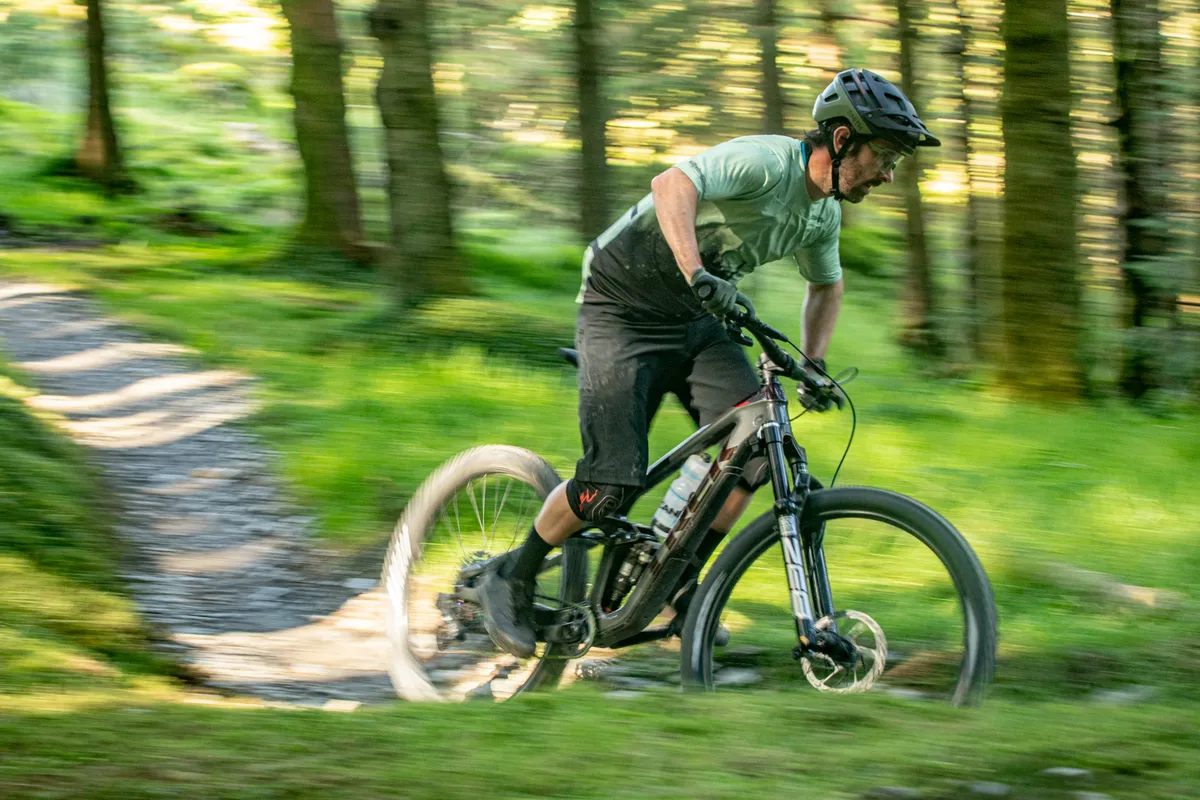
What about drawbacks on the descents? Well, I’ll admit to being something of a dial twiddler and I like my suspension to feel just right. Despite having less fettling potential, I was happy with how the bike felt.
RockShox seems to have done a great job in terms of tune and feel, and once I was pointing downhill, I could let the bike work away beneath me. There was never any second-guessing or head-scratching.
It was on long, technical singletrack, where momentum is usually hard to conserve, that I really appreciated the system. Adding that element of efficiency to a big-travel bike such as the Slash is akin to riding a shorter-travel machine, but without any of the downsides on the descents.
Battery life has been good so far and, if you’re familiar with AXS gearing, it’s just as easy to live with.
Overall, I’ve been seriously impressed with how well RockShox has executed this. You could easily argue that it adds cost and complexity to an already expensive and complicated bike – which, technically, it does – but if you’re looking to eke out the most from your ride and love cutting-edge tech, then Flight Attendant really is worth checking out.
Stay tuned for a full review in the coming months.
